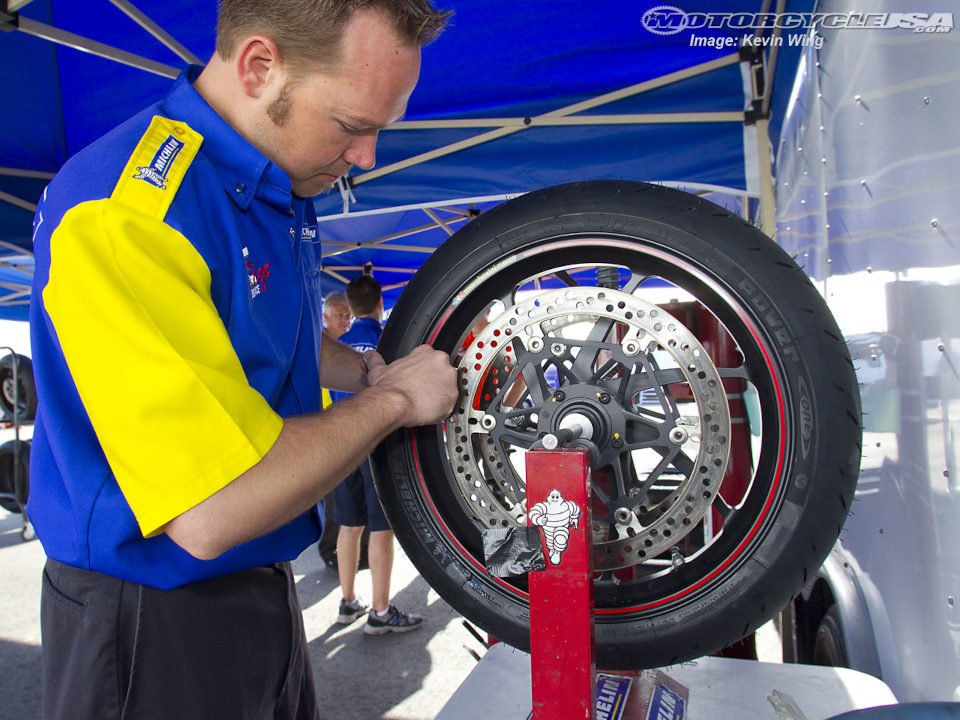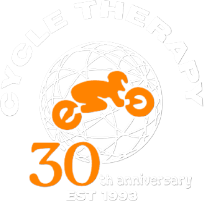Michelin Tires
Michelin has been a part of the tire industry in the United States since 1907 when it purchased the International Rubber Company in Milltown, New Jersey. Tires and tubes were manufactured there up until 1930 when the Great Depression took its toll on what had become the fourth largest tire manufacturer in the country with 2,000 employees. The Michelin North America as we know it today took form In March of 1950. With three sizes and two different tread designs of truck tires made with metallic plies, five people started Michelin Tire Corporation in New York City. There was an executive vice president, a vice president of sales, a secretary, a warehouse supervisor and one newly hired sales representative. The tires cost anywhere from 40-50% more than the competition but their construction with metal plies bonded to rubber allowed Michelin salesmen to offer a tire solution to fleets operating under the most severe conditions. This included fleets dealing with extremely heavy loads and in the sanitation business. This strategy established a reputation of durability and quality still prevalent today in the modern trucking industry.
Growth in sales led to the need for a larger facility in 1954. Developed in 1953, Michelin began to import the all-steel one ply radial truck tire in 1956. This is the tire that revolutionized the world tire market. There was interest in the radial truck, but the bulk of Michelin's sales were the older, metallic bias ply tires. Even with steady annual growth, the annual sales volume in 1959 were less than a week's production in a modern truck tire plant.
While the radial passenger tire had been gaining acceptance in Europe with car manufacturers in the late 1950's, it would be the mid1960's before it was factor in the United States. Michelin's world-wide growth in the 1960's was phenomenal with the opening of twelve new plants and the announcement that a plant would be built in Nova Scotia, Canada by 1971.
Two major events happened in 1966 that drew Michelin into the largest passenger tire market in the world. Up until 1966, Michelin had only been importing small quantities of radial passenger tires to service consumers with European cars originally fitted with Michelin radial tires. That year Ford decided the 1968 Lincoln Continental Mark III would have radial tires as original equipment. Although domestic tire manufacturers had purchased the license to develop radial tires, none were successful in developing a satisfactory radial tire. Ford then selected Michelin to be the supplier. This was a major boost for both the acceptance of the radial tire and establishing Michelin in North America. The second major event that made Michelin a part of the U.S. tire market happened when SEARS went shopping for a radial tire. In an effort to get ahead of its competition and realizing the impending radialization of the tire industry, SEARS sought out a supplier and ultimately selected Michelin for their reputation of high quality and technical expertise in building radial tires. By the end of 1969 expansion necessitated another move to a larger headquarters and the work force had expanded to 250 people. The sales force was now up to 103 people in the field.
Michelin had led a revolution in the transportation industry with the introduction of the radial tire. As the global demand for radial tires accelerated, Michelin responded with an expansion plan that opened twenty-three new plants, all producing radial tires. Michelin made the decision in the early 70's to produce only radial tires and eliminate production of the old-style bias ply tires. Two plants had been opened in Nova Scotia in 1971 and it was announced that construction would soon begin for two plants in western part of South Carolina. One plant, US2 in Anderson, SC, would build semi-finished products to supply the other plant that would produce tires. The plants were scheduled to open in 1975 and the very first radial passenger tire came off the line at US1, Greenville, South Carolina on March 10, 1975. A third plant, US3, in Spartanburg, SC came on line in 1978, producing radial truck tires for the rapidly growing radial market in the trucking industry. Expansion in the 1970's in the U.S. was completed with the opening of US4 in Dothan, Alabama. Along with the plants, a research and development was opened center in South Carolina because the corporation has always believed in developing products exclusively for a North American market where huge geographical distances demanded different tires than established European markets. In 1979, Michelin opened a new headquarters building in Lake Success, New York to accommodate a continuously growing work force. Michelin opened the decade with 250 employees and by 1979 the number was 7,000. Michelin had also expanded its tire lines dramatically from two types of tires that still required tubes to a full line of tubeless radial passenger tires to serve the growing demand for tires with greater fuel efficiency, longer life and better handling. In 1970 there were three types of truck tires offered and the 70's ended with an expanded line of tires to meet multiple and various needs of fleet owners, from over the road long haul operations to fleets hauling rocks or coal. There were now radial tires for bread fleets and small package delivery fleets.
The 1980's brought the challenges of consolidation and recession to the tire industry. Fully recovered from the effects of World War II, Japanese and European countries were competing toe to toe with American companies in a global economy. Many smaller tire companies were absorbed by larger ones because it was obvious that you had to get bigger in order to survive. Michelin had to invest heavily in the expansion of North America and it was not immune to the effects of the recession that hit the tire industry in 1980 and 1981. Serious losses were off-set by becoming more cost conscious and better planning. There was major competition to deal with now who were successfully manufacturing radial tires. Michelin has always been a resilient company and it came out of that period stronger and smarter. Two more plants, one in Lexington, SC and one Nova Scotia, were opened in the early 80's. To consolidate headquarters operations and manufacturing, Michelin made the decision to relocate its North American headquarters from New York where it had been since 1950 to Greenville, South Carolina. The doors opened at its present location in September of 1988.
After a careful study of market trends and monitoring the actions of its two major global competitors, Michelin made the decision in 1989 to purchase the Uniroyal-Goodrich Tire Company. This acquisition would not only make Michelin the largest tire company in the world, but would provide the corporation with a portfolio of strong brands with a rich heritage in the American tire market. Uniroyal and BFGoodrich Tire formed a joint venture in 1986 to leverage each others' strengths in the original equipment and replacement market. Michelin went into the 90's in a position to offer the best products at the best price point in all virtually every consumer category.
We at Cycle Therapy NYC Sell a Full Line of Michelin Tires. We Are the #1 Michelin Dealer in NYC.

